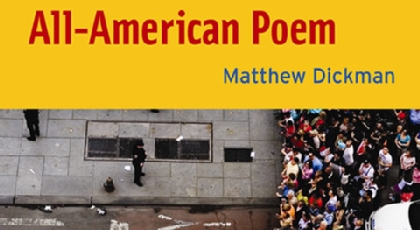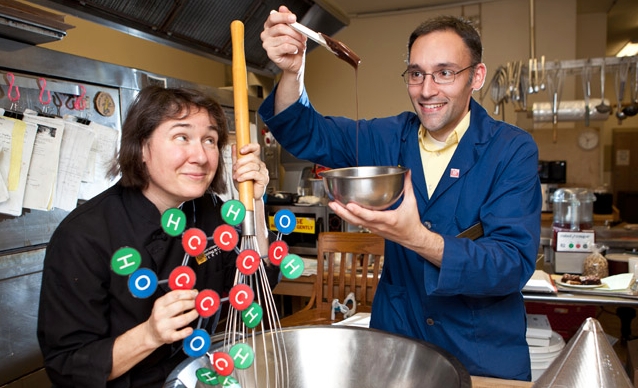Page 28 • (594 results in 0.014 seconds)
-

entertainment value, Barot and Skipper both highly recommend people utilize these opportunities. “We figure out who we are through stories,” Skipper said. “It’s how we come to understand the world.” Read Previous Crime of My Very Existence Read Next Transfer student finds his home at PLU COMMENTS*Note: All comments are moderated If the comments don't appear for you, you might have ad blocker enabled or are currently browsing in a "private" window. LATEST POSTS Three students share how scholarships support
-

Fickeisen really love how the enjoyment of food makes chemistry more palatable. Lytle credits Fickeisen and PLU’s Dining Services with coming up with some delicious foods as culinary examples for the talks. “Erica and Dining Services are my partners in crime,” Lytle said. “It’s a real labor of love. It’s absolutely a lot of work, but when we pull it off, it’s really something special.” He’s not sure what’s next on the menu, but that’s the fun of it. The recipe is always changing. Read Previous PLU’s
-

Anderson University Center, I invite you to join me for our first Listen Forum, focused on community questions and dialogue related to implicit racial and ethnic bias. This forum will begin to answer the questions: What is implicit bias? Why does it matter? What is the impact on belonging? How do we respond? We must understand that our identities–our points of privilege and oppression–can’t be considered in isolation. Gender and race, identity and politics, crime and justice, and family and culture
-
the ukukhehla ceremony, the second ceremony in which the future bride and groom exchange gifts and thanks before the actual wedding. For the majority of the ceremony the hat (or originally the bride’s hair) would be protected by a wrap of white fabric. At the appropriate moment in the wedding songs, the groom-to-be removes the wrap and pins a note to the headdress. Once married, a Zulu woman would wear this hat on a daily basis to signify her married status. The hat was one of very few adornments
-
the ukukhehla ceremony, the second ceremony in which the future bride and groom exchange gifts and thanks before the actual wedding. For the majority of the ceremony the hat (or originally the bride’s hair) would be protected by a wrap of white fabric. At the appropriate moment in the wedding songs, the groom-to-be removes the wrap and pins a note to the headdress. Once married, a Zulu woman would wear this hat on a daily basis to signify her married status. The hat was one of very few adornments
-
the ukukhehla ceremony, the second ceremony in which the future bride and groom exchange gifts and thanks before the actual wedding. For the majority of the ceremony the hat (or originally the bride’s hair) would be protected by a wrap of white fabric. At the appropriate moment in the wedding songs, the groom-to-be removes the wrap and pins a note to the headdress. Once married, a Zulu woman would wear this hat on a daily basis to signify her married status. The hat was one of very few adornments
-
good examples. Serve bite-size or finger foods. These items require no utensils. Selecting a menu that emphasizes fresh, seasonal vegetables (rather than meats) can greatly reduce the carbon footprint of your event. When serving meat one should note that white meat options take less land to farm and produce less methane than red meat options. If adding floral to your event, consider using live, potted plants that can be taken away and planted following the event instead of cut flowers. Provide
-

ideas around gender are challenged. 3rd Place: Picnic (Diptych) by Teagan James ’22 (painting & found photo) I was immediately drawn to this diptych when I entered the gallery. I was impressed with the translation of a found black and white photo into a larger painting in color, and I appreciated them being hung alongside each other, both framed. Honorable Mention #1: Glup by Jack Mahr ’22 (sculpture) This clay sculpture really intrigued me. I spent a lot of time trying to understand its reference
-
1993 – Walter Nugent 1994 – Michael R. Marrus 1995 – Richard White 1996 – Charles Royster 1997 – LeRoy Ashby
-
of Washington’s program. “(So) let’s all get together on this and make a difference,” he said. “We have everyday opportunities to help shift the culture.” Changing attitudes about not being engaged in the issue is a huge step in prevention. And small steps like wearing a T-shirt that speaks against violence or wearing a white pledge ribbon are ways to begin the conversation, Grove said. “It’s just a really easy way to do something that really requires very little time or effort but goes a long
Do you have any feedback for us? If so, feel free to use our Feedback Form.


